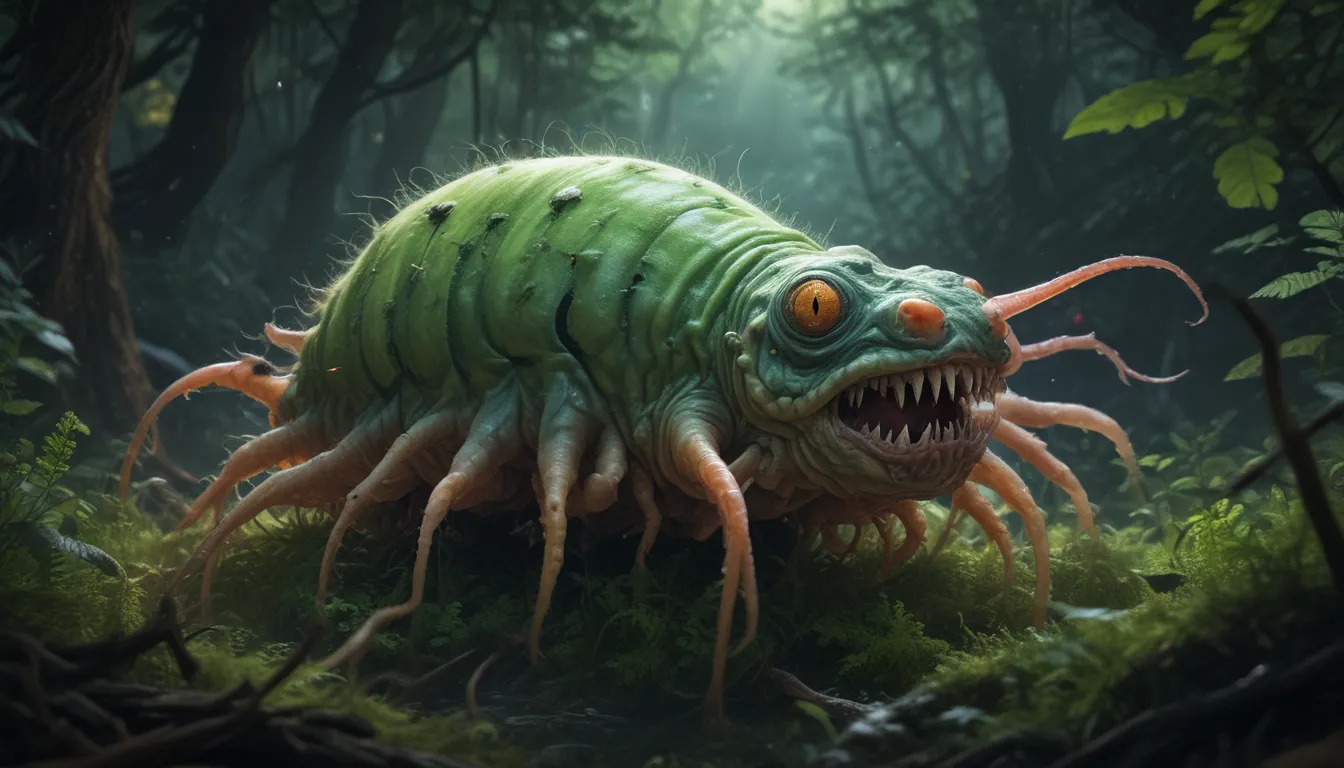A Note About Images: The images used in our articles are for illustration purposes only and may not exactly match the content. They are meant to engage readers, but the text should be relied upon for accurate information.
When it comes to the intricate tapestry of life on Earth, few organisms captivate our attention like ectoparasites. These tiny creatures have carved out a unique niche for themselves by living on the blood or skin of other animals. From fleas and ticks to lice and mites, ectoparasites showcase a stunning array of adaptations and behaviors that make them a fascinating subject of study.
The Fascinating World of Ectoparasites
Ectoparasites are a distinctive group of organisms that have evolved to live on the surface of their hosts. Unlike endoparasites that reside inside the body, ectoparasites rely on the external surfaces of their hosts for survival and reproduction. This unique lifestyle has led to a diverse array of adaptations and behaviors that set ectoparasites apart from other organisms.
Varieties of Ectoparasites
Ectoparasites come in a wide range of forms, from the familiar fleas and ticks to the lesser-known lice and mites. Each type of ectoparasite has its own unique adaptations and strategies for parasitism, making them a rich and varied group to study. Understanding the differences between these various ectoparasites can provide valuable insights into their biology and ecology.
Health Impacts of Ectoparasites
Beyond being mere nuisances, ectoparasites can have significant health impacts on their hosts. They are capable of transmitting diseases and causing discomfort and irritation. For example, ticks are notorious for transmitting Lyme disease, while fleas can trigger allergic reactions and spread parasites like tapeworms. Managing ectoparasite infestations is essential to protect the health of both humans and animals.
Evolutionary Strategies of Ectoparasites
Ectoparasites have evolved remarkable survival strategies to thrive in diverse environments. Fleas are known for their exceptional jumping ability, allowing them to move effortlessly between hosts, while lice have specialized claws that enable them to cling to hair or feathers. These adaptations highlight the ingenuity of ectoparasites in navigating their complex existence.
Ecological Significance of Ectoparasites
Despite their negative reputation, ectoparasites play crucial roles in ecosystems. They can help regulate host populations, promote biodiversity, and serve as indicators of environmental health. Understanding the ecological dynamics involving ectoparasites is vital for maintaining the balance of ecosystems and preserving biodiversity.
Longevity and Complexity of Ectoparasites
Ectoparasites have existed for millions of years, co-evolving alongside their hosts to adapt and survive. Fossil evidence dating back millennia underscores the enduring presence of these tiny hitchhikers in the natural world. Their complex life cycles, involving multiple stages and host species, further highlight the intricacies of ectoparasite biology.
Managing Ectoparasite Infestations
Efficient control measures are indispensable in managing ectoparasite infestations and safeguarding the well-being of hosts. From the use of insecticides to proper sanitation practices and regular veterinary check-ups, a proactive approach is essential to mitigate the harmful effects of ectoparasites. By implementing effective control strategies, the impact of ectoparasites can be minimized.
Conclusion: Unveiling the World of Ectoparasites
Ectoparasites are remarkable creatures that have adapted to thrive on the external surfaces of their hosts. While they can pose health risks and challenges, ectoparasites also contribute to the intricate web of life on Earth. Delving into the diverse adaptations, behaviors, and ecological roles of ectoparasites provides valuable insights into the interconnectedness of organisms within ecosystems.
FAQs: Exploring Ectoparasites Further
-
What is an ectoparasite? An ectoparasite is a type of parasite that lives on the external surface of its host organism.
-
Do ectoparasites only infect animals? No, ectoparasites can infect a wide range of hosts, including both animals and plants.
-
How do ectoparasites survive? Ectoparasites survive by feeding on their host’s blood, tissues, or other bodily fluids.
-
Can ectoparasites transmit diseases? Yes, many ectoparasites are capable of transmitting diseases to their hosts, such as ticks carrying Lyme disease.
-
Are ectoparasites harmful to their hosts? Ectoparasites can cause harm to their hosts by causing irritation, discomfort, and transmitting diseases.
-
How do hosts defend against ectoparasites? Hosts have developed various defense mechanisms like grooming, immune responses, and symbiotic relationships to control ectoparasite populations.
-
Can ectoparasites be controlled or eliminated? Various methods, such as insecticides, repellents, and hygiene practices, can help control ectoparasite populations and reduce their impact.
-
Can ectoparasites become resistant to control measures? Yes, excessive and improper use of control measures can lead to the development of resistance in ectoparasites, making control more challenging.
-
Is it possible to prevent ectoparasite infestations? Yes, adopting preventive measures like using repellents, maintaining hygiene, and treating pets regularly can help prevent ectoparasite infestations.
Ectoparasites are not just tiny hitchhikers; they are essential components of ecosystems, showcasing a remarkable array of adaptations and behaviors. By delving into the captivating world of ectoparasites, we gain a deeper appreciation for the complexities of the natural world and the interconnected relationships between organisms. Next time you encounter an ectoparasite, take a moment to marvel at its ingenuity and resilience in the vast tapestry of life on Earth.






